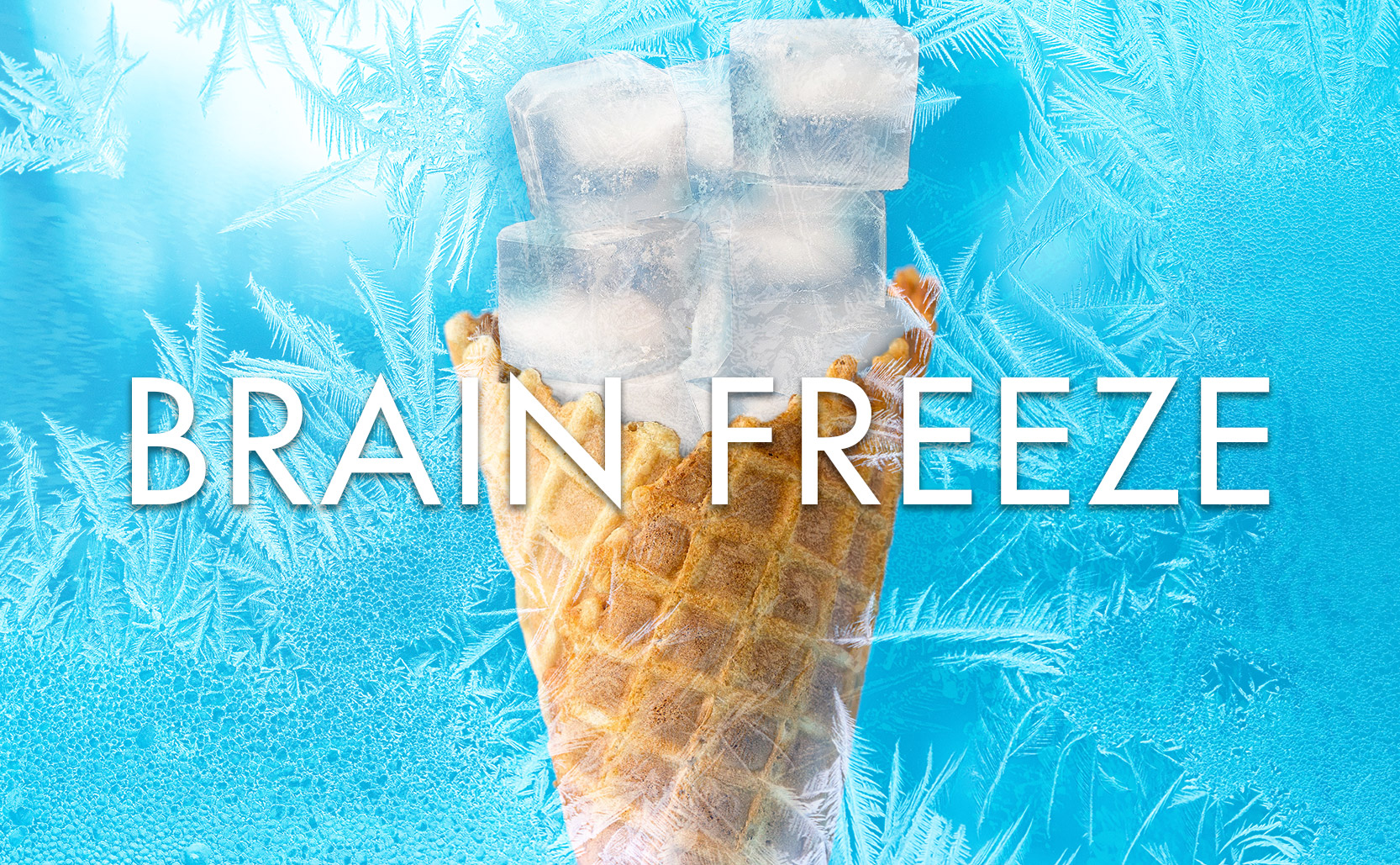The short headache triggered by cold food and/or drinks touching the inside of your mouth.
To start, brain freeze (aka “ice cream headache” or “cold-stimulus headache”) only affects about 30-50% of the population. Most people can eat ice cream and drink extra cold drinks without any fear of reprisal from their nervous system.
Brain freeze occurs when the roof of your mouth or the back of your throat suddenly come into contact with cold food, cold drinks, or even cold air. The trigeminal nerve in your head reacts to the cold by telling the arteries connected to the meninges (the membranes surrounding your brain) to contract to conserve warmth (much like how our bodies react to the cold in general). Then the body sends more warm blood up to the head telling those same arteries to expand. This quick succession of vasoconstriction and vasodilation of blood vessels triggers pain receptors along the trigeminal nerve which creates the pain you feel behind the eyes or forehead during a brain freeze.
A lot of nerve
While we all have a trigeminal nerve its varying sensitivity may explain why not everyone gets brain freeze. For example 37% of Americans may get brain freeze but only around 15% of Danish adults do. Further, 93% of people who get migraines are also susceptible to brain freeze.





